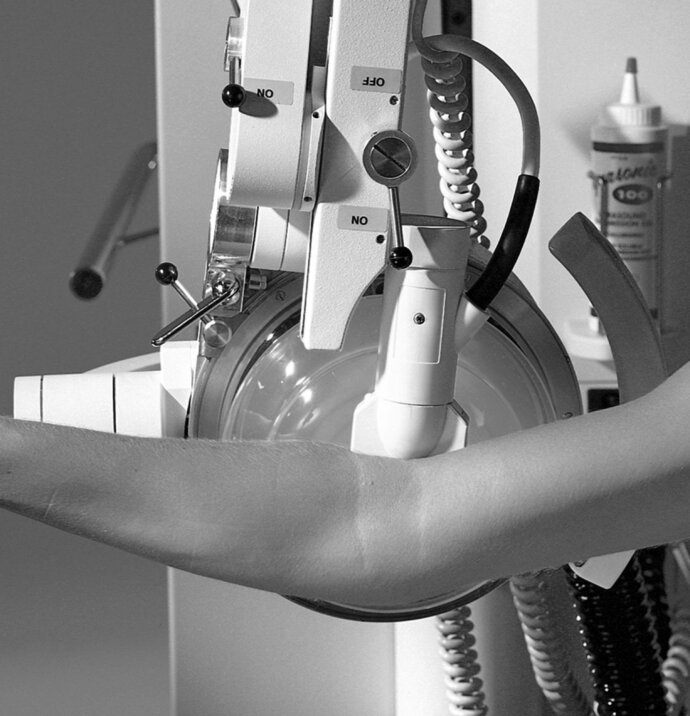Tennis elbow (or lateral epicondylitis) generally starts out as a mild pain and gradually becomes worse. Chronic sufferers can have severe pain that rarely decreases. In chronic tennis elbow, the pain is located at the outside of the elbow below the joint’s bony prominence. You will feel pain if you reach and grip, or lift and carry even a lightweight object.
You don’t need to be a tennis player to suffer lateral epicondylitis. In most cases, tennis elbow is a result of movements that repeatedly engage the muscles in your forearm. It is a very common workplace or athletic injury.
The effects of ESWT are best documented in areas of changes in tissue density, such as those where a tendon attaches to a bone (enthesiopathies) and where a bone attaches to a ligament (desmopathies). For this reason, it is very effective for painful connective tissue in the elbow. Additionally, ESWT gives new hope by relieving pain, eliminating the risk factors associated with surgery and allowing people to resume their normal lives.
Your condition is unique. We are here to help you find out if ESWT is right for you.
Contact us for a no pressure review of your case, an information packet, and an informational video.
Tremendous improvement! You were all fabulous to work with. Thank you! I have been able to resume walking better and longer. Not being woken with foot pain is wonderful!
”- Helene F., West Caldwell, NJ
